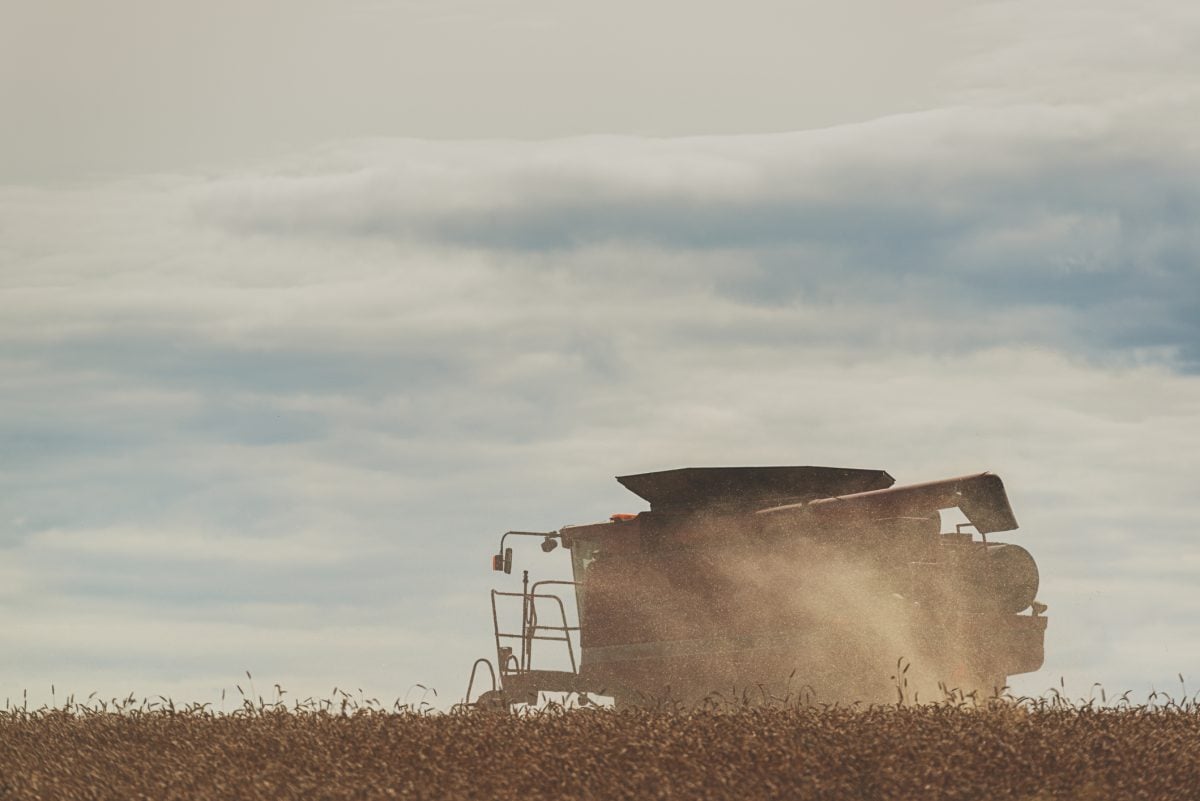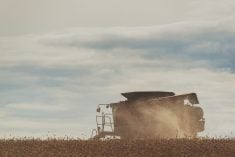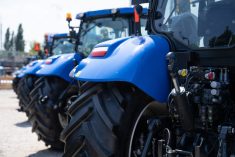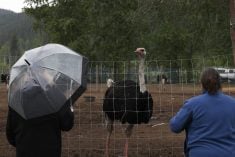Plant breeders from across Western Canada will have their newest and most promising crop lines assessed this week at industry meetings in Saskatoon.
The Prairie Grain Development Committee (PGDC) is hosting its annual meeting Feb. 22-25.
The meeting is a make-or-break event for plant breeders and seed distributors hoping to garner registration support for new crop lines from industry peers.
Through the PGDC, a comprehensive peer review process is used to evaluate new crop lines for agronomic properties, disease resistance, end use performance and other key measures.
Read Also

Russia’s top agriculture official blames low global grain prices for export slowdown
Low global prices for grains, Russia’s main agricultural commodity, have caused a sharp fall in exports in recent months.
Crop lines that receive registration support at the meetings are usually approved for commercial production by the Canadian Food Inspection Agency’s variety registration.
With CFIA approvals in place, the new varieties can then be multiplied in the pedigreed seed system and eventually made available to commercial grain farmers.
Although the new crop lines supported by PGDC are often years removed from large-scale commercial production, they represent the industry’s best and brightest new seed products.
New varieties supported at the meetings often produce higher yields, as well as significant improvements in terms of end-use quality, as well as disease and insect resistance.
Dozens of new crop lines will be scrutinized this week including new, high yielding durum lines with enhanced stem solidness, high yielding winter wheat cultivars with improved yield potential and disease resistance packages, and new red lentil lines that offer a significant yield bump over existing check varieties.
At least two promising new CWAD lines from the Agriculture Canada breeding program at Swift Current are expected to be put forward for registration support this week.
DT862 is a solid stemmed durum variety that yielded 15 percent higher than AC Navigator in pre-registration trials, five percent higher than Strongfield and has stronger straw than all CWAD checks.
The second line, DT863, showed yield improvements of 11 percent and 2 percent relative to Navigator and Strongfield and had higher grain protein than Strongfield as well as slightly earlier maturity.
Both lines are from the program of durum breeder Yuefeng Ruan at Swift Current, Sask.
Two new winter wheat lines — W525 and W526 — are also notable in that they offer intermediate resistance to FHB and yield improvements of 15 and 17 percent respectively over CDC Buteo at Saskatchewan test locations.
Promising new crop lines from the Crop Development Centre at the University of Saskatchewan include a solid stemmed, midge resistant Canada Western Red Spring (CWRS) line and a new midge resistant, Clearfield Canada Prairie Spring (CPS) line with yield potential 20 percent higher than 5702PR.
Other crop lines that are expected to be put forward for registration support are listed below.
CANARYSEED
C05041 (Name pending)
• Developed by Pierre Hucl, CDC, University of Saskatchewan
• Pending registration support in February 2016
• Glabrous line
• Yield 22 percent greater than CDC Maria
• Maturity one day later than CDC Maria
• Yellow seeded line with shorter straw
LENTIL
3674-15 (Name pending)
• Developed by Bert Vandenberg, CDC, University of Saskatchewan
• Pending registration support in February 2016
• Red lentil line, conventional
• Yield is 11 percent greater than Maxim
• Early to medium maturity
• Disease reaction similar to Maxim
• Quality similar to Maxim
IBC 975 (Name pending)
• Developed by Bert Vandenberg, CDC, University of Saskatchewan
• Pending registration support in February 2016
• Red lentil line, Clearfield
• Yield is nine percent greater than Maxim
• Early to medium maturity
• Disease reaction similar to Maxim
• Slightly smaller seed size relative to checks, equal to Dazil
WHEAT – DURUM
DT862 (Name pending) CWAD
• Developed by Y. Ruan, AAFC Swift Current
• Pending registration support in February 2016
• Parentage: DT805/DT795
• Solid stem, stronger straw
• Yield is 15 greater than AC Navigator, five percent greater than Strongfield, three percent greater than Brigade
• Grain protein 0.4 units below Strongfield
• Matures one day earlier than Brigade
• Height is two cm below Strongfield
• Straw strength stronger than all checks.
• Test weight greater than checks.
• Kernel size is larger than Strongfield.
• Rating for leaf rust and loose smut is R
• Rating for stem rust, stripe rust, common bunt is MR.
• Improved leaf spot resistance.
• Susceptible to FHB, similar to Strongfield.
DT863 (Name pending) CWAD
• Developed by Y. Ruan, AAFC Swift Current
• Pending registration support in February 2016
• Parentage: A0138-CQ01/DT812
• Early maturing and higher protein than checks
• Yield is 11 greater than AC Navigator, two percent greater than Strongfield, two percent les than AAC Cabri
• Grain protein 0.3 units greater than Strongfield
• Matures earlier than all of the checks, one day earlier than Strongfield
• Height is three cm les than Strongfield with better straw strength
• Test weight slightly lower than checks with kernel size greater than Strongfield
• Rating for leaf rust is R
• Rating for stem rust, stripe rust, loose smut common bunt is MR
• Improved leaf spot reaction.
• Susceptible to FHB, similar to Strongfield
WHEAT – SPRING
BW1005 (Name pending) CWRS
• Developed by CDC, University of Saskatchewan
• Pending registration support in February 2016
• Yield is one percent below Unity VB,
• Maturity is equal to Unity VB
• Moderately resistant to resistant (MR/R) for fusarium headblight
• Potential antixenosis for midge
BW1013 (name pending) CWRS
• Developed by S. Kumar, AAFC Brandon
• Pending registration support in February 2016
• Parentage: BW853/99B33-AK3D
• Awned hollow stem line
• Yield is 12 percent greater than Carberry with similar protein content
• Matures three days earlier than Carberry.
• Lodging scores similar to Glenn.
• Shorter in height
• Resistance rating for leaf rust, stem rust, stripe rust, loose smut is R • Resistance rating for leaf spot diseases is MR
• Resistance rating for FHB is I
• Quality suitable for CWRS class based on two years data (2013-2014)
BW1016 (Name pending) CWRS
• Developed by S. Kumar, AAFC Brandon
• Pending registration support in February 2016
• Parentage: Carberry/Goodeve
• Awned hollow stem line
• Yield is four percent greater than Carberry with 0.3 percent higher protein.
• Matures two days earlier than Carberry
• Shorter in height and improved stem strength relative to Unity
• Resistance rating for FHB is MR
• Moderately resistant to Ug99 stem rust race
• Resistance rating for leaf rust, stem rust, loose smut is R, stripe rust is MR, bunt and leaf spot diseases is I
• Quality suitable for CWRS class based on two years of data (2013-2014)
BW488 (Name pending) CWRS
• Developed by CDC, University of Saskatchewan
• Pending registration support in February 2016
• Yield and maturity are equal to Unity VB
• Intermediate to moderately susceptible (I/MS) for fusarium headblight
• Moderately susceptible (MS) to stripe rust
• Carries Sm1 gene for midge resistance
• Solid stemmed line
• Height is similar to Glenn
• Lodging is similar to Lillian/Unity
BW980 (Name pending) CWRS
• Developed by R. Cuthbert, AAFC Swift Current
• Pending registration support in February 2016
• Parentage: Carberry/99B61-AY30B5
• Yield four percent greater than Carberry with similar grain protein.
• Plant height five centimetres taller than Carberry, three cm less than Glenn
• Similar straw strength to Carberry
• Test weight and seed size similar to Carberry
• Fusarium headblight rating is R-MR, consistently low scores
• Stem and leaf rust, stripe rust, loose smut resistance is R
• Rating for common bunt resistance is R-I
GP151 (Name pending) CWGP Spring
• Developed by H. Randhawa, AAFC Lethbridge
• Pending registration support in February 2016
• Parentage: 93FHB37/2*Andrew//SWS366
• Excellent Yield performance
• Yield is 14 percent greater than AC Andrew, 10 percent greater than Sadash, nine percent greater than Pasteur
• Maturity same as AC Andrew, two days earlier than Pasteur
• Plant height six centimetres greater than AC Andrew with good straw strength
• Large kernel size with excellent test weight
• Rating for leaf rust, stem rust, stripe rust is R
• Rating for bunt, loose smut is I
• Intermediate resistance to FHB
HW039 (Name pending) CWHWS
• Developed by A. Burt, AAFC Brandon
• Pending registration support in February 2016
• Parentage: BW315a//HW308/ND800
• Yield is five percent greater Whitefox, two percent greater than AAC Iceberg.
• Grain protein 0.4 units above AAC Iceberg, the highest check
• Matures 1.2 days earlier than AAC Iceberg
• Plant height and straw strength similar to Whitehawk.
• Test weight higher than all of the checks
• Kernel size larger than Whitehawk, but smaller than AAC Iceberg
• Rating for stem rust, bunt, loose smut is R-MR.
• Rating for leaf rust is I
• Improved resistance to FHB as compared to the checks
HW041 (Name pending) CWHWS
• Developed by A. Burt, AAFC Brandon
• Pending registration support in February 2016
• Parentage: BW315a//HW308/ND800
• Yield six percent greater than Whitefox, three percent greater than AAC Iceberg
• Grain protein 0.3 units greater than AAC Iceberg, the highest check
• Matures 1.3 days earlier than AAC Iceberg
• Plant height and straw strength similar to Whitehawk
• Test weight higher than all of the checks
• Kernel size larger than Whitehawk, but smaller than AAC Iceberg
• Rating for stem rust, bunt, loose smut is R-MR
• Rating for leaf rust is I
• Improved resistance to FHB as compared to the checks.
HY2003 (Name pending) CPS
• Developed by CDC, University of Saskatchewan
• Pending registration support in February 2016
• Yield 20 percent greater than 5702PR
• Maturity two to three days earlier than 5702PR
• Carries Sm1 gene for midge resistance
• Two gene Clearfield line
• Higher protein than 5702PR
PT250 (Name pending) CWRS
• Developed by R. Cuthbert, AAFC Swift Current
• Pending registration support in February 2016
• Parentage: Somerset/BW865//Waskada
• Yield four percent greater than Glenn with 0.5 units more grain protein
• Matures about one day earlier than Glenn
• Plant height and straw strength similar to Glenn
• Test weight lower than Glenn, with larger seed size
• Rated R-MR for FHB resistance, consistently low scores
• Rating for resistance to stem, leaf rust is R
• Rating for stripe rust, common bunt is MR-I
• Rating for loose smut is MR
WHEAT – WINTER
W525 (Name pending) CWRW
• Developed by R. Graf, AAFC Lethbridge
• Pending registration support in February 2016
• Parentage: S98-11//Crimson/CDC Falcon
• Particularly well adapted to Saskatchewan
• Overall yield is six percent greater than CDC Buteo
• Yield in Saskatchewan is 15 percent greater than CDC Buteo)
• Winter survival is equal to or greater than CDC Buteo
• Grain protein is 0.2 percent greater than CDC Buteo
• Plant height is three cm shorter than CDC Buteo
• Straw strength improved over CDC Buteo and Moats
• Maturity is equal to CDC Buteo
• Stem and leaf rust rating is MR
• Stripe rust is I; FHB is I; Bunt is S
W526 (Name pending) CWRW
• Developed by R. Graf, AAFC Lethbridge
• Pending registration support in February 2016
• Parentage: S98-11//Crimson/CDC Falcon
• Particularly well adapted to Saskatchewan
• Overall Yield is seven percent greater than CDC Buteo
• Yield in Sask. is 17 percent greater than CDC Buteo)
• Winter survival is equal to CDC Buteo
• Grain protein is 0.2 percent higher than CDC Buteo
• Plant height is four cm shorter than CDC Buteo
• Straw strength is improved over CDC Buteo and Moats
• Maturity is equal to CDC Buteo
• Rating for stem, leaf & stripe rust is MR
• Rating for FHB is I; bunt is S
• Improved leaf spot resistance















